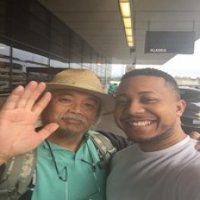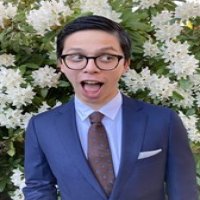Student Profiles: Honoring Filipino American History Month at Foster, Part 2
Filipino American Heritage Month runs during the month of October. It commemorates the first recorded presence of Filipinos in the continental United States. This began during the Manila-Acapulco Galleon Trade era, from 1565 to 1815 when Spanish galleons crossed the Pacific between the Philippines and Mexico. Spanish explorer Pedro de Unamuno acted as the commander and landed in now-Morro Bay, California on October 18, 1587. The members of the landing party included indigenous Filipino men who worked as sailors but two days later Native Americans attacked the group, resulting in the killing of one Filipino person. To this date, this event is remembered as the first time people of Asian descent were in modern day California and continental U.S.
With more than 4 million Filipinos living in the United State, they are the second-largest Asian American group in the nation and third-largest ethnic group in California. Filipino American Heritage Month was recognized in October by the U.S. congress in 2009. Each year, this is recognized with a special theme and 2021 is “50 Years Since the First Young Filipino People’s Far West Convention.” This is related to the more than 300 young Filipino Americans who participated in the first Young Filipino People’s Far West Convention at Seattle University in 1971 which sparked the beginning of the Filipino American Movement. For more information please visit Filipino American National Historical Society
In this 3 part series, we asked Foster students what Filipino culture means to them and how do they relate to it. In part 1, we had Brent Aoude and Zharen Gonzales and today in part 2 we have Jay Patacsil and Dominic Francesco Racelis.

Jay Patacsil, Foster MBA 2022
Jay Patacsil
Where did you grow up?
San Diego, California.
What did you do before pursuing your MBA?
I worked for 9 years at AT&T across retail management, program management, and reporting and analytics roles.
What’s your cultural background?
I am mixed with Filipino and Black, each of which have heavily influenced the person I am today.
How do you connect to your heritage?
The primary way I do this is by spending time with family, especially my grandpa who has always been my number 1 fan. During different family get-togethers we play Sungka Sungka which is somewhat similar to Manacala, but played with shells, a slightly different board, and a few other nuances. At weddings on the Filipino side of my family you’ll see many of the men wearing a Barong Tagalog, which is a traditional long sleeve formal shirt with very unique cultural designs.
What leader, cultural figure, or historical moment would you like to recognize during this month and why?
Some of the people I am most impressed by are my great grandparents Eugenio & Virginia Patacsil. My great grandfather joined the US military as a way to bring his family to the states and offer them a better life. From those humble beginnings, they selflessly set their family on a trajectory that may not otherwise have been possible.

Dominic Francesco Racelis, Foster MBA 2023
Dominic Francesco Racelis
Where did you grow up?
I’m originally from Bellevue, Washington, but spent much of my childhood in Lynnwood and Seattle.
What did you do before pursuing your MBA?
I previously earned my Bachelor’s in Informatics & Operations Management at UW. I then spent 5 years working in real estate as a Sales, Marketing, and Operations Manager before coming back for the MBA.
What’s your cultural background?
I’m Filipino Mestizo – my father is from Quezon City, Philippines, and my mother was born in Minneapolis. I speak both English and Spanish, and hope to learn Tagalog with my dad’s help very soon.
How do you connect to your heritage?
I connect to my heritage mainly through food. Seattle has many outstanding Filipino restaurants and community kitchens for all the classic dishes – pancit, lumpiang shanghai, sisig, lechon (I could go on and on)*. These are amazing places to meet other Seattle Filipinos, enjoy authentic foods, and even learn the recipes and history. I hope to learn Tagalog in the next few years so I can visit my cousins in Manila and speak their language.
*Pancit: stir-fried noodle dish w/ assorted veggies, meats, and garlic
Lumpiang shanghai: filipino egg rolls with pork or shrimp
Sisig: boiled and grilled pork dish w/ onions and chili peppers
Lechon: crispy fried pork belly
What leader, cultural figure, or historical moment would you like to recognize during this month and why?
My immediate thought is Lea Salonga – she’s an iconic and massively popular Filipina singer and actress, best known as the singing voice for Jasmine and Mulan in the Disney movies. It’s impossible to overstate her impact as a trailblazer for Filipinos in the arts, especially when music is so deeply tied to Filipino culture and history. Other famous Filipino-Americans include Bruno Mars and Olivia Rodrigo – maybe you’ve heard of them?
For the final part in the series click here.
To learn more about the Foster community, please reach out to our Student Ambassadors or Admissions Team.
Aarin Murray, Foster Class of 2022, and Christine Pham, Foster Class of 2022 and VP of Diversity at Foster, co-authored this post.
